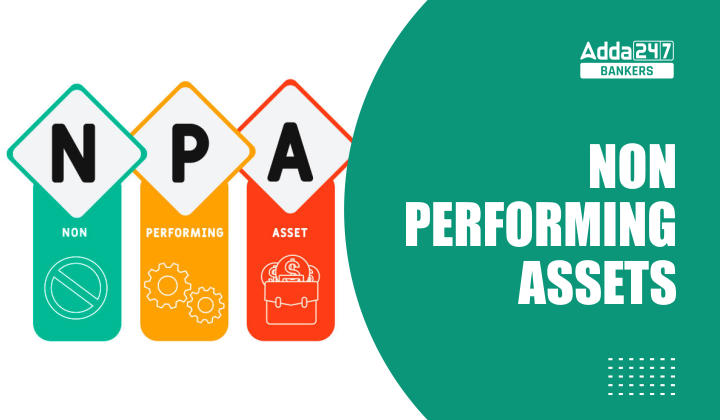Table of Contents
Non Performing Assets
In general, each and every individual should be familiar with the term, Non Performing Assets. Candidates preparing for exams like IBPS RRB, IBPS Clerk, IBPS PO, SBI, RBI etc. can expect questions in the General Awareness section from the given topic. Here, we have discussed in detail Non-Performing Assets(NPA) along with other important information associated with it.
Non Performing Assets: Definition
Money or Assets are provided by banks to individuals or companies in terms of loan and this loan would be unpaid by borrower is called as ‘Non Performing Asset’. This late payment or unpaid loan by borrower is defined as NPA and it is also termed as ‘bad assets’. RBI monitors and controls the entire banking system in India and according to RBI’s guidelines, if the interest or instalment amount is overdue for a period of more than 90 days then that particular loan account will be considered as Non-Performing Asset.
Types Of Non Performing Assets
There are various types of Non Performing Assets depending on their duration in the NPA Category. Here, we have discussed the Non Performing Assets Types.
- Sub-Standard Assets: The assets that remain in the NPA Category for a time duration of less than or equal to 12 months are classified as Sub-Standard Assets.
- Doubtful Assets: The assets that remain in the NPA Category for a time period of more than 12 months comes under Doubtful Assets.
- Loss Assets: Loss Assets are those assets in which there is a significant risk that the financial institution may not recover the full amount or any part of the outstanding loan.
Reason Behind Rising Level Of NPAs
The Indian economy was in boom phase from 2000-2008 and banks specifically Public Sector Banks had given loans extensively to companies. With the financial crisis 2008-09, companies made less profits and the government of India banned mining projects. Because of this situation results shortage of supply of raw materials and it affected infrastructure sector, power, iron and steel sector as well. Another reason is, the lending norms adopted by banks were relaxed for big corporate houses, foregoing analysis of their financials and credit ratings.
Impact Of NPA On Bank
Non-performing assets pose significant concerns for financial institutions, particularly banks, as they lead to a loss of income for the lender. When a borrower fails to repay a loan, the bank stops earning interest and other returns on that particular loan. This situation can have a profound impact on the bank’s financial health, as it may be required to allocate more funds as provisions for bad debts, affecting profitability and capital adequacy. To mitigate the risks of NPAs, banks take various precautionary measures, starting with conducting thorough due diligence before extending loans. This involves assessing the borrower’s creditworthiness, financial stability, and the intended use of the loan. By making informed lending decisions, banks aim to minimize the occurrence of NPAs. When NPAs do arise, financial institutions attempt to recover the outstanding amount through various means. This may involve legal action against the borrower, restructuring the loan to make repayment more feasible, or selling the assets pledged as collateral.
Steps And Developments Taken To Handle NPAs
Some steps and developments that have been taken to handle NPAs are discussed below in the given post.
Insolvency and Bankruptcy code (IBC): Constituted by parliament in 2016, to consolidate the existing framework by creating a single laws for insolvency and bankruptcy. The resolution process is now quickly done from earlier to control the quality of assets.
Credit Risk Management: CRM taking the accountability of monitoring, credit appraisal and credit by performing various analyses on profit and loss accounts. At the time of conducting these analyses, banks are nowadays also considering a sensitive analysis and build their safeguards against external factors.
Strict Credit Monitoring: A proper and effective Management information System (MIS) is implemented to monitor warnings and take preventive steps before it occurs. MIS can detect issues and alerts to management in timely manner so that necessary steps can be taken to control it.
Amendments to give more power to RBI: The current scenario is allowing the RBI just to inspect a lender but it does not give them the power to set up an oversight committee. With the amendment to the law, RBI will be able to monitor large accounts and create oversight committees.
Strictness in NPA recovery: Government should give more power to banks to recover their NPAs amount rather than to wait and watch position.







